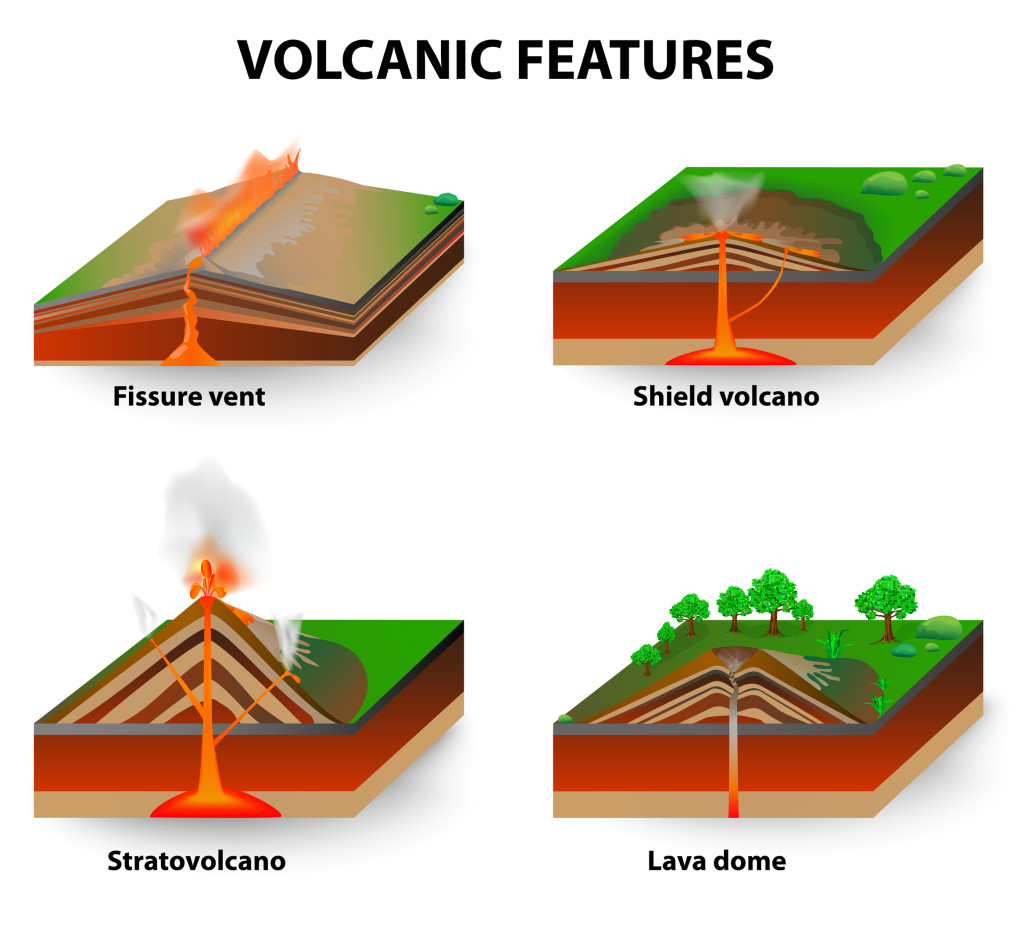A volcano is a point or a long crack out of which ash, rock, gases, and lave (molten rock) can travel. When material comes out of a volcano in an explosive, violent way, it is called an eruption. Let’s look at the main types of volcanoes on the Earth.
Fissure Vents – A fissure is a crack, and a volcanic fissure is a crack that lava comes out of. These fissures may form on land, on the sides of other volcanoes or lava fields, or underwater at spreading zones where tectonic plates move away from each other.
Shield Volcanoes – Shield volcanoes form over “hotspots” where magma in the earth’s mantle becomes extra-hot and flows upward to the crust. Lava generally flows out slowly, though these volcanoes can also erupt, sending lava and gas into the air. They are usually big, low, and curved, like the shape of a knight’s shield.
Cinder Cones – These are usually small but steeper-sided volcanoes that also form in relation to hotspots. Cinder cones are more explosive than shield volcanoes. When the cinder cone erupts, it blasts hot lava and ash up into the air where it cools rapidly and falls to stick on to the cone’s slopes, rather than just leaking out like a shield volcano.
Stratovolcanoes – Stratovolcanoes are volcanic mountains that build up in successive layers of different kinds of rock. These are usually found inland of subduction zones, where the water-rich rock of a heavy oceanic plate gets pushed under a continental plate, melted, and then rises up to the continental surface. Different types of melted rock, mixed with the explosive build-up of steam, build the layers of these volcanic slopes. Stratovolcanic eruptions are the most powerful and dangerous type, releasing lava flows, pyroclastic flows, ash, and even bombs (large flying rocks).

No comments:
Post a Comment